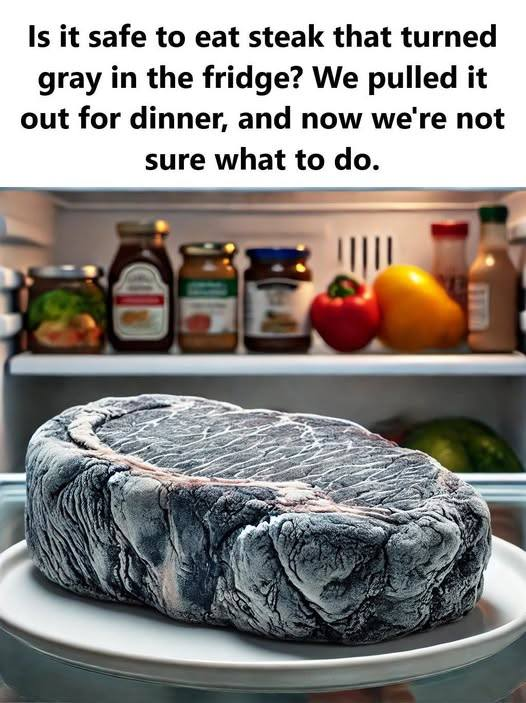ADVERTISEMENT
What to Do If Your Steak Turns Gray: A Guide to Meat Safety
You’ve planned a delicious steak dinner, but when you open the fridge, you find that your steak has turned gray. This can be alarming, but it doesn’t necessarily mean the steak is spoiled. In this article, we’ll explore why steak can change color, what it means for its safety, and how you can make an informed decision about whether to cook it or toss it.
Understanding Meat Color Changes
It’s important to know that meat color changes are a natural occurrence and can happen for various reasons. Fresh steak is typically a bright red color due to the presence of oxymyoglobin, a pigment formed when myoglobin in the meat reacts with oxygen. Over time, exposure to air can cause this pigment to change, leading to a grayish or brownish hue. While this color change may seem alarming, it doesn’t necessarily mean that the steak has gone bad.
Factors That Cause Steak to Turn Gray
Several factors can contribute to steak turning gray:
Oxidation: This occurs when the meat is exposed to air. The oxygen reacts with the myoglobin, changing the color of the meat.
Storage Method: If the steak is tightly wrapped or vacuum-sealed, it might not have enough oxygen exposure to retain its bright red color.
Temperature Fluctuations: Changes in temperature in the fridge can also cause color changes in the meat.
Assessing the Safety of Gray Steak
Color alone isn’t a clear indicator of whether steak is safe to eat. If the steak has turned gray but doesn’t show any other signs of spoilage, it might still be good to cook. To determine its safety, consider:
Smell: If the steak smells sour or off, it’s a sign that it may have spoiled.
Texture: A slimy or sticky texture is a red flag, as it could indicate bacterial growth.
Expiration Date: Check the expiration date. If the steak is past this date, it may not be safe, even if it doesn’t have any obvious signs of spoilage.
Signs of Spoilage Beyond Color
Besides color, there are other important indicators of spoilage:
Odor: A strong, unpleasant odor is a primary sign that the steak is no longer safe to eat.
Texture: A slimy, sticky, or tacky texture suggests bacterial growth.
Discoloration: If the steak shows green or iridescent patches in addition to being gray, it’s a sign of spoilage.
Expert Opinions on Consuming Gray Steak
Food safety experts stress that while color changes can be unsettling, they don’t automatically indicate that the meat is unsafe. They recommend using a combination of sensory evaluations (smell, touch) and proper knowledge of storage practices to assess meat safety. If you’re uncertain, it’s always a good idea to consult food safety guidelines or err on the side of caution.
Steps to Take If Your Steak Has Turned Gray
continued on next page
